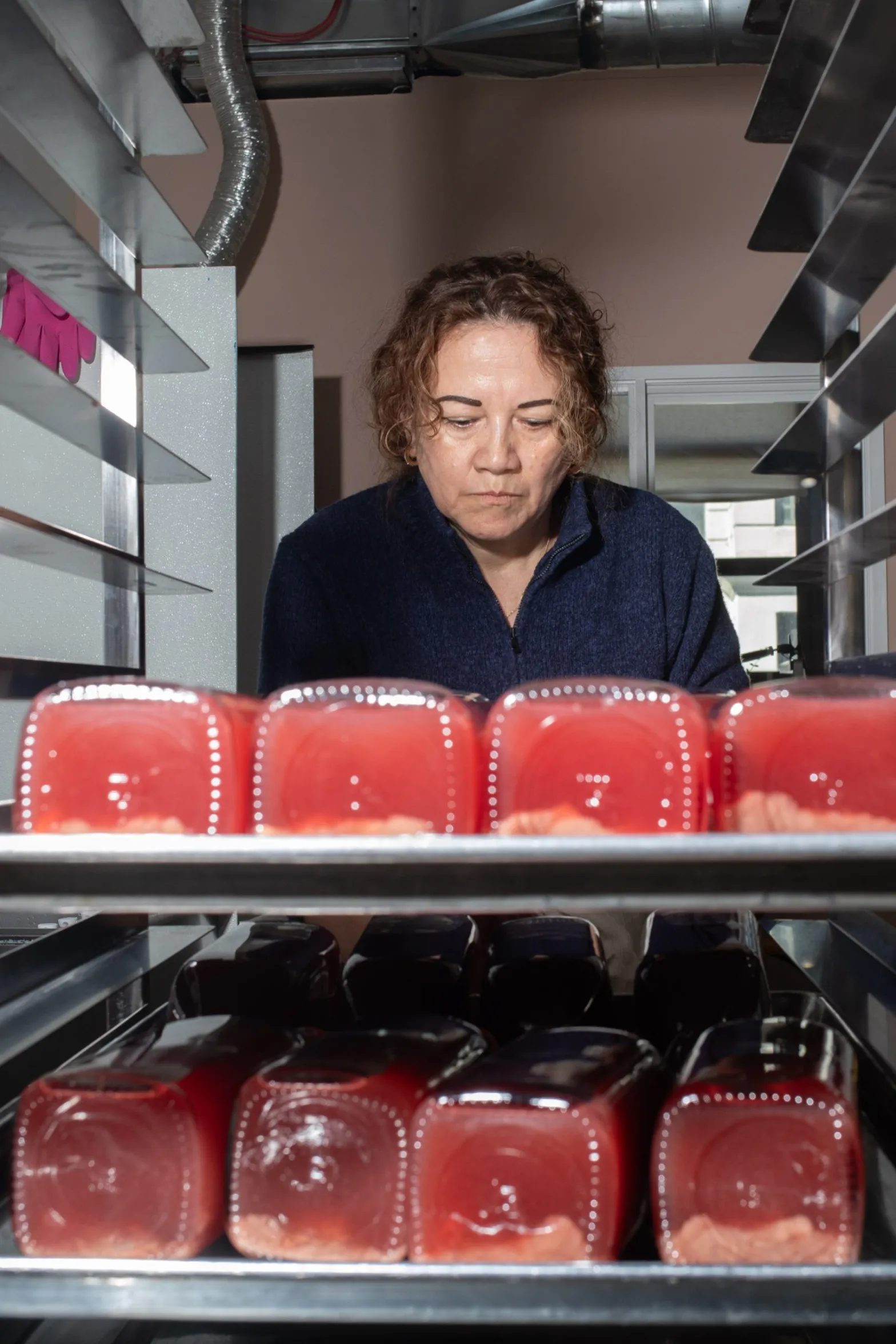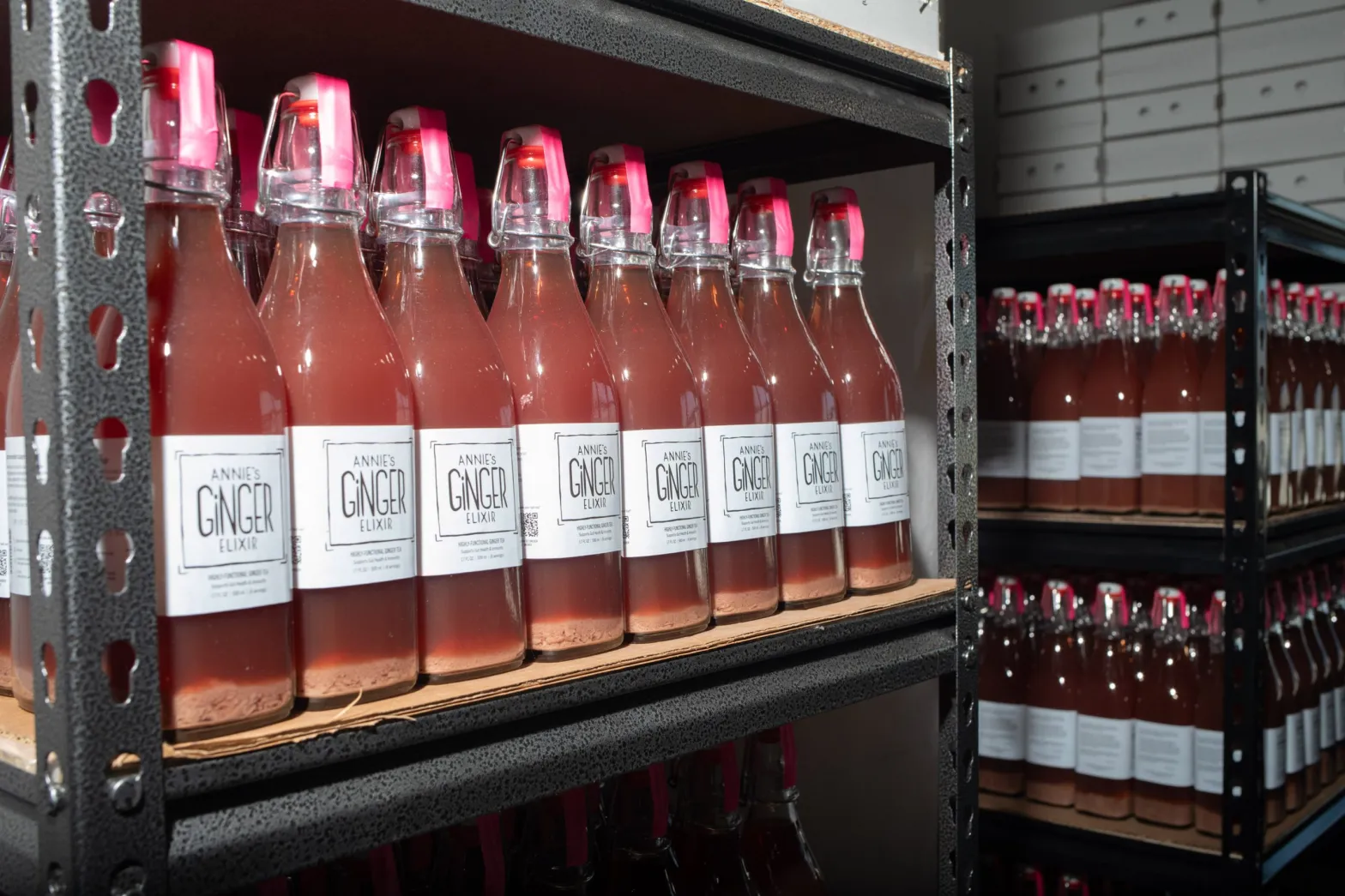Yves here. This article provides some vignettes about the way Trump tariffs, both the (probable) fact of their imposition and the whipsawing over them is wreaking havoc with successful small businesses. These modest-scale enterprises are the engine of job growth. Some of the ones profiled here are also manufacturers, even if not the metal-bending or techish sort. So America is going to have to dig itself out of not just the offshoring/outsourcing hole, but also Trump-inflicted tariff wounds? How is that supposed to work, exactly?
I am perhaps more sentimental about these case studies than I ought to be, because it reminds me of the gritty and vibrant city I moved to when young. There were a lot more small retailers, many of whom sold their own wares, from specialty food stores to niche clothes designers and even hat makers to importers of European casual china to lighting specialists. And I think of the friends and contacts who started or helped run a products business, from a jewelry designer to a dietary supplements maker to a board games designer and manufacturer to a maker of specialty food products (exotic jams and pastes to use in cooking). All of these small businesses are fragile; only one of the four mentioned above survived for more than five years.
By Greg David. Published by THE CITY on March 11, 2025

Annie’s Ginger Elixir founders Allard Van Hoorn and Annie Bassin work out of their Brooklyn Navy Yard production center, March 20, 2025. Credit: Ben Fractenberg/THE CITY
The glass bottles that Annie Bassin uses to bottle her wellness beverage come from China and became 25% more expensive when President Donald Trump imposed a tariff during his first term. Now that he has added another 20% tariffs to goods coming from that country, Bassin sees little choice but to raise the price on her most popular item — a one-liter bottle that currently sells for $45.
Almost a third of the food Manny Colon purchases for his Upper West Side bistro comes from either Canada or Mexico. If Trump imposes his promised 25% tariff on those countries, he will face a choice of raising his prices or seeing his profits disappear. Maybe worse, he says business is down 20% in recent weeks which he thinks is because his heavily older clientele, living on Social Security and investment income, is cutting back amid the economic storms of the last three months.
Ali Williams, director of production at the Brooklyn-based apparel company Kirrin Finch, spends half her time gaming out scenarios as Trump announces and then withdraws tariffs. The company currently sources its goods from Italy and India, but must place orders at least six months in advance, which means enormous uncertainty about what its goods might actually cost to import.
“The biggest thing day to day is dealing with the whiplash of which country and which product types would be subject to tariffs,” Kelly Moffat, her boss and co-founder of the company.

Marilyn Verdesoto produces Annie’s Ginger Elixer bottles inside their Brooklyn Navy Yard headquarters, March 10, 2025. Credit: Ben Fractenberg/THE CITY
Like their counterparts around the country, small businesses in New York City are being buffeted by Trump’s actions to impose wide-ranging tariffs and promises for more. They are considering raising their prices or finding new places to source their goods, but they are also paralyzed by the uncertainty created by Trump’s on-and-off approach.
At the moment, most tariffs on Canada and Mexico are on hold, a 20% levy is in effect for China and the administration is considering imposing fees on European products.
A tit-for-tat this week over power Canada exports to the U.S., much of which goes to New York, ended with pledges to begin negotiations.
The stakes for New York are huge. Canada is the number-one export market for New York State companies, buying more than $10 billion worth of services and $9.5 billion worth of goods annually.
The tariffs Trump has threatened on China, Canada and Mexico would cost the average New York State household $1,742 a year, according to a study by the Economic Policy Institute, a labor-based group that supports targeted tariffs but not the Trump approach. It is the 11th highest projected burden in the country.
For small businesses, the immediate question is whether they will need to raise prices.
Trump administration officials have claimed that foreign producers will absorb the cost of tariffs, but these New York businesses say the costs are being passed along to them.
Colon, who in 2020 opened Manny’s Bistro on the site of a shuttered restaurant he had managed for 15 years on Columbus Avenue, said he is unlikely to raise prices because he worries his customers won’t be willing or able to pay them. His is already one of a minority of restaurants that doesn’t add a surcharge for credit card payments.

“I have a supportive clientele and they are concerned about costs,” he added. “I might have to cut back on staffing. It is going to be messy.”
Bassin too is worried about how customers of Annie’s Ginger Elixir will react but believes she has no choice but to raise her prices in May. Her company has grown in eight years from making her beverage, designed to improve respiratory health, in her home kitchen to an enterprise with more than $1 million in sales, employing eight people at the Brooklyn Navy Yard as well as more than 15 brand ambassadors.
She has looked into buying her bottles domestically, but the cost would be at least triple and would involve much larger minimum order sizes.

“I’d have to double my prices and that would put me out of business,” she said.
When Kirrin Finch was just starting out 10 years ago, it made its product in Midtown, but as it grew it needed lower costs and specialized workers, which it found in India and Italy. Despite having several million dollars in sales, Moffat thinks she will encounter stiff consumer resistance if she raises the price of her top-of-the-line $600 Italian menswear suit, which is sold primarily to women, trans and non-binary people.
“We are really just trying to cover all our bases and look at every country we can and be prepared for what may or may not happen,” said Williams.
However, the company needs to place its orders six months in advance and has hundreds of thousands of dollars worth of goods in production now, which could suddenly become much more expensive if tariffs are imposed before they reach the United States.
She has no choice but to live with that uncertainty.
With so much in flux, every move the businesses are considering becomes more risky. Bassin, for example, has been planning to start exporting to the United Kingdom and Japan. But she has taken note of how Canadian retailers have taken American liquor brands off their shelves.
“Are people in the U.K. going to want American products any more?” she asked.


I am beginning to think that the whole idea behind these tariffs is to erect a big, beautiful wall of them fencing off America to the rest of the world. And then, in a return to a sort of 19th century economy, Americans will pull themselves up by their bootstraps and open up hundreds of thousands of small businesses to supply Americans with what they use to be able to get from overseas. Not sure how that would work out if this is his idea of Making America Great Again.
One example from this post called Annie’s Ginger Elixir mentions that ‘She has looked into buying her bottles domestically, but the cost would be at least triple and would involve much larger minimum order sizes.’ So would higher costs be the norm across the board? And with a pretty shaky economy, would banks be willing to make loans to small businesses when they know that the majority of them will fail in the first five years?
But to me the whole thing sounds like one grand social Darwinism experiment that was dreamed up by a bunch of ideologues who will never have to suffer the consequences if it all goes wrong.
I think you meant to say “when”,
“…when it all goes wrong.”
I stand corrected, sir.
It looks to me like this social experiment to wall off America and get everyone back to bootstraps basics is likely to fail even regardless of ideologyy. If conducted anywhere else, it’s much more feasible.
Using the domestic bottles example, a reason they’re expensive is an American making these bottles in their garage or shop can’t justify the time, resources and expense, can’t eke a living from it, can only do it for love of craft and sell at exorbitant prices. Unless an American assembly line somewhere makes the bottles, it won’t bring the price down. And, actually, even if an American assembly line does, see how Amazon gouges both sides of the buyer and seller equation and prices/costs spiral.
A makers market only works where one can make bottles for a living and that’s certainly not the United States.
Weren’t things very expensive in the 50’s? I watch a lot of YouTube fix things videos. One guy repairs old tube TV’s for a hobby. He spends his time making hour long videos on getting the old TV’s to work. He was talking about the designed repairability, how they have circuit diagrams on the back panel. I remember TV repairmen coming to the house in the 60’s. I did a calculation of the cost of these TV’s vs the price of gold, and found the TV’s were about $3000. I think most things back then were bought with payment plans. $3000 for a TV is ok if it works for 30 years. Watching old movies and seeing the lead character move by throwing all his possessions into one suit case and catching a bus out of town is enlightening. Extremely expensive goods, and long lasting products might be what this world needs. I have about 6 cell phones that are obsolete and sitting in a box.
I think the problem about these tariff’s is most people have no idea how expensive things have to get before it’s all made in America.
Expensive is ok as long as quality improves in direct proportion with the cost. Making durable, top-quality goods is currently considered not good for business as volume goes down over time. Further, how does a business turn durable and top-quality into subscription pricing?
I’m pretty sure that there is an app for that. :)
I’ve never given any thought before as to where bottles come from. It seems incredible that even with high tariffs, Chinese bottles are still cheaper than locally made ones, and also more convenient (with lower minimum order sizes). I mean, they’re just bottles, right?
It got me wondering about the UK. Per the Observatory of Economic Complexity (whoever they are), the UK imports bottles mostly from Ireland (£6.95M), China (£5.28M), France (£4.36M), Germany (£4.34M), and Italy (£1.82M).
Whilst also exporting bottles mostly to Ireland (£8.06M), France (£713k), Belgium (£518k), Dominican Republic (£506k), and Netherlands (£440k).
I suppose it shows how complicated international trade is, with the UK’s biggest supplier of imported bottles, Ireland, also being by far its largest bottle export market. And what the Dominican Republic is doing on that list I have no idea.
Annie might have to think about requiring a deposit on her bottles. They become recyclable. Of course she would have to collect them and clean them for refill. There are plenty of obstacles here, not the least of which is getting retailers to handle both the bottle rebate and (ouch) the storage in tight Manhattan spaces.
Glass is a repository of the energy used to form and anneal the glass. If glass from China is less expensive than glass from the u.s. as it apparently is, I can only wonder at where the additional costs that cripple u.s. glass production might arise. Most Glass, Bottle and Jar Manufacturing in the u.s. was sold to foreign companies. In retrospect, what surprise should tariffs present to products whose inputs are largely sourced from outside the u.s.? In line with Neoliberal thinking, I suppose the destruction of small business concerns merely represents examples of the Market’s efforts to improve u.s. domestic markets.
Looking at the bottles Annie’s Ginger Elixer chose, I can only wonder why the company does not shift to the metal cap seal popular with a lot of wine makers. Annie could sell a special reusable cork/plastic cap for resealing the bottles to retain the carbonation.
Bottles and jars are usually labelled and the labels are usually attached using a non-watersoluble glue making labels not all that easy to remove. Additionally, the standards for bottle sterilization and the costs of the needed machinery is beyond the means of many small wine, and beverage producers. Bottles for wines and beverages have become fairly well standardized to 750 ml and 1.5 ml bottles of standard shape. While there are some who insist on making their bottles different, they are definite outliers. If wines and many beverage bottles were standardized, as they are already for many intents and purposes, they could be collected and re-cycled. If the labels were required to be adhered with water soluble glues and the sterilization processes were ‘rationalized’ to be both practical and effective — as opposed to fitting largely arbitrary regulatory standards needing adjustments, the recycling of wine and beverage bottle would become standard and could save large amounts of energy and lower costs. The use of water soluble labels and penalties for using new types of glass inks to specialize bottles instead of using paper labels, would go a long way toward increasing the viability of domestic beverage production.
An economic reset is overdue.
Time for collapses to make those with access to buy up big!
DJT will get the blame. Millions will die unnecessarily early.
But, the Rich, riiight?
Of all the ways tariffs can hurt buisnesses, I wonder why the author of this article chose the first example which simply does not pass the common sense test. If a bottle of some drink cost 45 dollars for a liter, would the increased price of bottle really hurt them so much. Those people who can afford to pay 45 dollars for 6 servings of a drink can surely pay a little more! (Yes, 45 dollars is not a typo, it really is in this range, I checked it online), While I do not know what they pay for the bottles, I believe the cost of bottles are not that high. Just look at all the cheap products sold in bottles of different shapes and sizes!!
Similar argument can me made for another example: the 600 dollar dress.
The ginger drink is an “elixir”, think 19th century bitters. recommended serving size is two to three oz, ten to fifteen servings per bottle. I don’t buy it, we make our own called tea, but tinctures and elixirs are enjoying popularity these days. (’tis a mystery)
Not a dress, it’s a suit. $600 for an Italian made suit is cheap.
My company has just announced a price increase of 10% across the board. We are heavily steel intensive in our manufacturing and have seen steel jump more than 15% in the last 5 weeks. That’s even before the on again / off again 50% tariff.
The uncertainty is just creating chaos with no ability to plan for the next 3 months let alone the next 3 years.
Trump tariffs in NY state
When Trump’s tariffs wound Canada, Upstate NY bleeds, too: cars, farms, beer syracuse.com archive.ph
I’m going into smuggling.
A few points:
1. The cost of many modern products is not so much a result of how much material and labor goes into making them, but the cost of transportation, warehousing, and distribution. Glass bottles are particularly costly because they are heavy, voluminous, and somewhat fragile. It’s probably cheaper by bottle to get whole shipping containers full of bottles from China, dump them in a big distribution center, and then send them to customers than it is to collect truck-fulls of US-made bottles from various plants, drive them to the nearest distribution center, and then deliver them to the handful of customers willing to pay extra for them.
Intra-US distribution is probably made even more expensive by the state of our rail network, and the sorry state of the US-flagged merchant marine responsible for coastal trade.
2. The cost of the bottle might be a small fraction of the $45 retail price of the product, but her profit margins have probably already been worn thin by rising rents, labor/healthcare costs, and financing costs. When the rent goes up, producers try to cut costs elsewhere to compensate. Cheap glass from China is an easy way to cut costs, I suspect buying cheap Chinese ginger would be an even better way, though she probably doesn’t want to talk too loudly about that. When push comes to shove, though, the only real way to cut costs is to cut down on the flows of money from main street to the FIRE sector, because that’s where the bulk of the money is going.
This may be apocryphal, but read that Kona Brewing, a Hawaii beer company, found it cheaper to brew on the west coast and ship bottled beer to Hawaii, than to ship bottles to Hawaii to be filled here. Reason is that ocean shipping and household goods shipping are the only two areas still federally regulated as common carriers. Budweiser was able to negotiate a good tariff for shipping bottled beer and that tariff can be used by any shipper.
Other beer start-ups have all used aluminum cans for which I guess sheet aluminum is shipped to Hawaii and cans locally produced (and Hawaii is still using the “old” (206) 12 oz can standard that has been replaced on the mainland by the 202).
This post said nothing about the consolidations of recent years and their impacts on small business. Though tariffs may hit both large and small vendors, I believe most larger vendors have much larger war-chests and deeper pockets than small vendors. Though harming short-term profits, I believe many of the larger vendors could greatly benefit from the losses consequent from Trump’s tariffs. As small businesses fail, the larger businesses can absorb their market shares. Given the climate for anti-trust actions, I can only suspect that many of even the larger businesses may be angling for buy-outs by still larger businesses. Though painful, the aftermath of Trump’s tariffs may result in a further consolidation of u.s. businesses with a resulting increase in the monopoly profits that they can extract from u.s. consumers.
I demur from suggesting Trump’s tariffs have any planned for or deliberate outcome. They appear too random, too scatter gun for a deliberate policy. Besides the Trump administration seems unable to craft policy, at least as it has been understood in the past.
Trump’s restructuring of the u.s. economy will be his legacy. How the economy restructures will be our entertainments for the next four years.
I think I will start listening to my audio version of Steinbeck’s “The Winter of Our Discontent”, a fitting epitaph for this dying age.
Other than the cost of materials though, I’ve always thought the biggest impediment to opening a small business in the US is health care costs and the lack of a universal system for at least some level of basic healthcare needs. Even for a medium sized business it’s a 10-20 percent hit on employee costs if the full average cost of a policy is anywhere from 10-20k a year for the premiums alone.
Fix that issue and you’d probably see an explosion of small business creation – all other things being equal which of course they aren’t.
Universal health care in the u.s. is a happy thought, but unlikely. Aside from discussion of small even medium or large scale businesses and health care insurance costs, how much do u.s. costs for health care, housing, transportation, and other costs serve to cripple, especially the small but also the medium scale, and even the large scale businesses in the u.s.? The rentier economy Michael Hudson writes about is a major drag on u.s. business. Another factor crippling small and medium business in the u.s. is the level of monopolization.